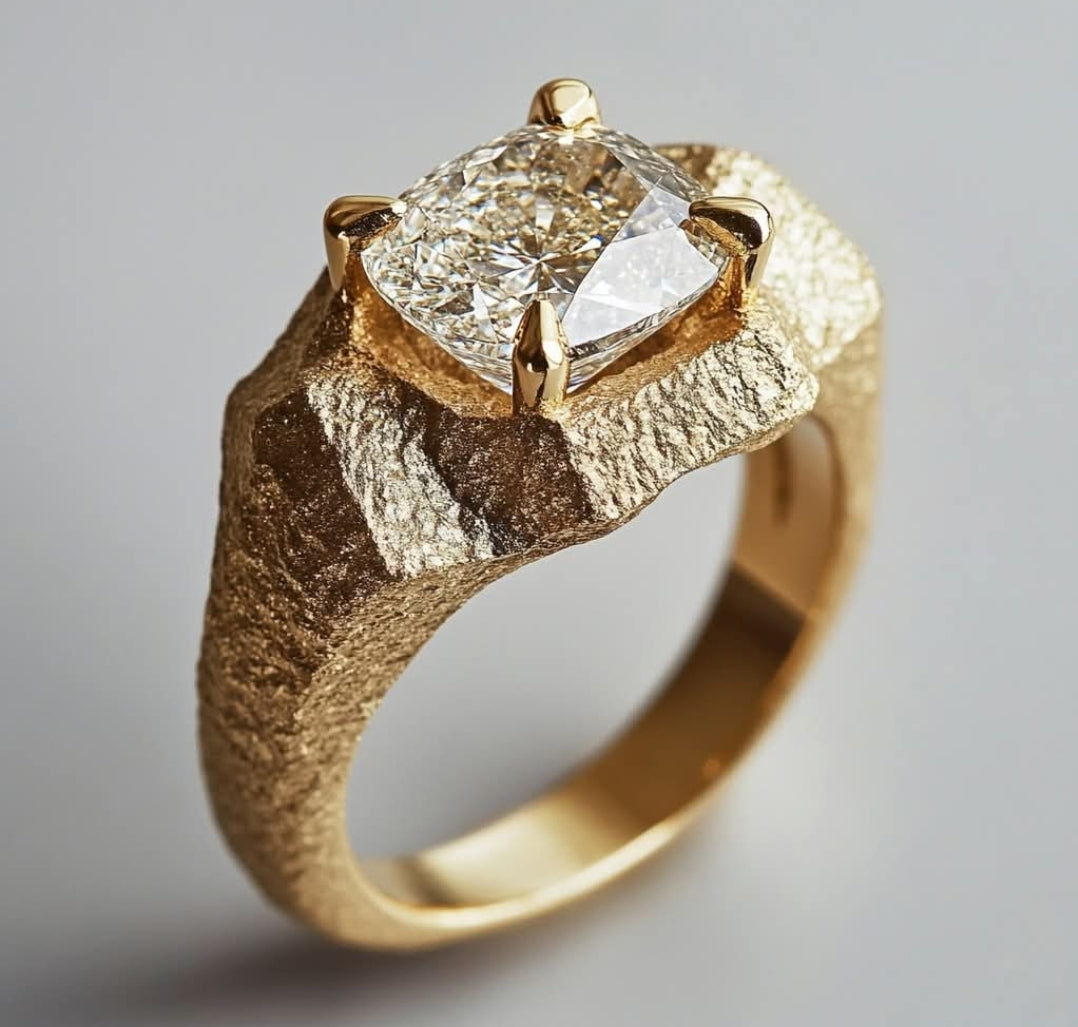Gold is timeless. For thousands of years, it has been shaped, sculpted, and worn as a symbol of power, beauty, and meaning. But what truly sets one gold piece apart from another is its texture. From rough finishes that feel organic and raw to high polishes that shine like mirrors, textures define how we experience jewelry.
In this guide, we’ll explore the artistry of gold textures — and why they matter more than ever in artisan gold jewelry today.
1. Rough Finish Gold Jewelry: Raw and Organic
Among the most distinctive trends in contemporary design is rough finish gold jewelry. Instead of polishing away every imperfection, this style embraces texture — the scratches, grooves, and irregularities that echo nature.
A rough finish feels alive, almost as if it were sculpted directly from the earth. It’s perfect for those who want their jewelry to carry a sense of authenticity and individuality. No two rough finish pieces are ever exactly the same, making them ideal for collectors who value uniqueness over uniformity.2. Handmade Gold Necklaces: Human Touch in Every Detail
In a world of mass production, the handmade gold rings and necklaces is experiencing a renaissance. Every strike of the hammer, every carved detail, every smoothed edge tells the story of the artisan behind it.
Handmade textures often have a warmth and irregularity that machines cannot replicate. Whether it’s a brushed matte surface or a hammered wave pattern, handmade gold reflects not just beauty, but also intention.
3. 18K Gold Texture: The Standard of Luxury
When it comes to 18k gold texture, the richness of the metal plays a crucial role. Unlike 14k or 10k, which mix in more alloys, 18k retains 75% pure gold — giving it a softer hue and a more malleable character for artisans to experiment with.
This purity allows for a wide range of textures: from satin finishes that feel silky, to hammered finishes that sparkle subtly, to high polishes that gleam with unmatched intensity.
4. High Polish: The Classic Mirror Finish
At the opposite end of the spectrum is the high polish finish. This is the style most people associate with traditional luxury jewelry — smooth, gleaming, and reflective.
High polish surfaces radiate timeless elegance. They capture light beautifully and pair seamlessly with diamonds and gemstones. While more common than rough finishes, they remain essential for creating pieces that feel formal, celebratory, and iconic.
5. Why Texture Matters in Artisan Gold Jewelry
The rise of artisan gold jewelry reflects a cultural shift toward individuality and authenticity. People no longer want jewelry that looks like everyone else’s. They want pieces that feel personal — that carry a story.
Textures are central to this. They give jewelry character, depth, and emotional resonance. Whether rough or polished, every surface tells a story of craftsmanship, material, and meaning.
Final Thought
From the raw earthiness of rough finish gold jewelry to the luminous glow of a high polish 18k gold rings, textures are the soul of fine design. They define not only how jewelry looks, but how it feels, and how it connects to the wearer.
As an Israeli jewelry designer, I love working with organic textures that resemble ocean waves — fluid, natural, and timeless. They remind us of life’s rhythm: imperfect yet beautiful, ever-changing yet eternal.
✨ Discover more artisan gold jewelry at MargaretKrinetz.com
